The Indian Air Force fought one of the most significant post-Independence aerial clashes with its arch rival, the Pakistan Air Force on 27 February 2019. It’s been long since the world saw two nuclear-armed, fourth generation combat aircraft-equipped near-peer adversaries engaging each other in a highly dynamic full spectrum operational environment. This event saw the use of class leading beyond visual range (BVR) missiles in an air-to-air engagement by Pakistan; along with application of modern air combat tactics and doctrinal philosophies on diverse frontage by both sides.
This is a detailed OSINT analysis of the events that took place between 0930 to 1030H on India’s western border, on a day which would go down in the annals of aerial combat history for the grit and determination shown by a small group of Indian fighter pilots in blunting a well-executed large force PAF package attacking ground targets in south Kashmir; as well as the turning the tables on the dogged PAF F-16 ambush, which was hell bent on shooting IAF Sukhoi Su-30MKIs at all costs. What was very obvious by the end of the Pakistan’s Operation Swift Retort was that the PAF had bitten far more than it could chew — in an ignominious honour, losing a 4th generation F-16 to a 3rd generation MiG-21 in a fierce counter-attack by the Indian Air Force.
In this first part of a two part write-up on the subject, I will examine the PAF’s combat strength, doctrine, limitations, military aim and tactical plan for Op Swift retort, as well as identify the various participating strike, air defence and support formations which executed the various missions on 27 Feb 2019.
The second part will analyse the execution, conduct, achievements and lessons learnt from this aerial skirmish, especially highlighting the core role played by the IAF in blunting this attack. The second part will be released in the coming days on ThePrint.
Prelude — Crossing the Rubicon
Early morning at 0330H on 26 February 2019, Mirage 2000 aircraft of the Indian Air Force made shallow incursions into the PoK and launched a pre-emtive strike on the Jaish-e-Mohammad (JeM) terror camp at Jabba Top, Balakot in Khyber Pakhtunkhwa — Pakistan — hitting the targets as planned. These strikes were a direct response to the Pakistan-supported terror group JeM’s suicide attack on the convoy of Indian CRPF jawans at Pulwama near Srinagar on 14 February.
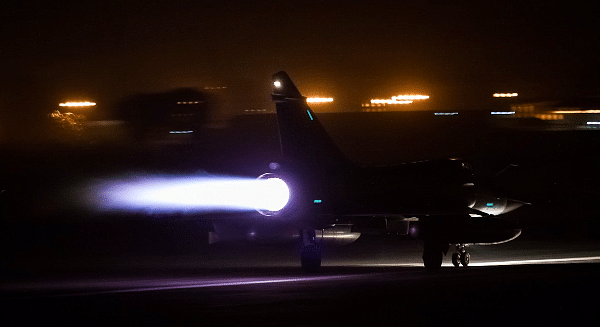
The IAF strikes completely surprised the Pakistani military establishment; in that India used airpower as a strategic signalling tool — in a less than war scenario — crossing the Line of Control (LoC) on an offensive attack mission inside Pakistan for the first time since the 1971 Indo-Pak war.
High resolution satellite imagery available in public domain confirms India’s claim — the primary target, the Mujahid hostel, displays clean entry marks of 3 Spice 2000 penetrator bombs in the roof. Pre-strike and post-strike 30 cm high resolution imagery can be sourced to validate the same — including the hasty repair work carried out by the Pakistani Army in the days after the strike.
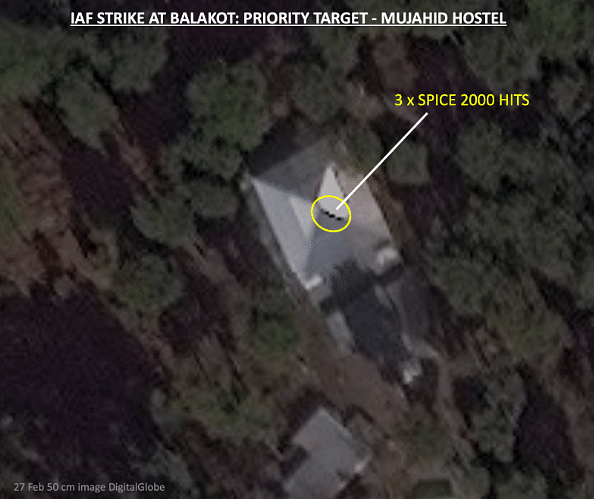
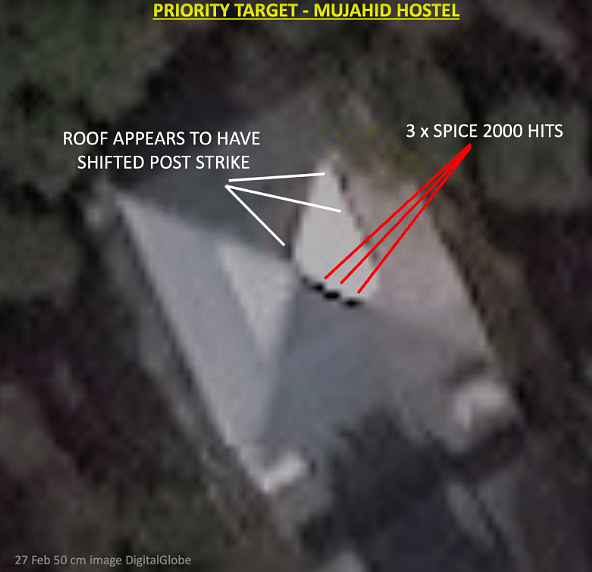
Much like the famed crossing of the Rubicon river by Julius Caesar back in 49 BC that precipitated the Roman civil war , the IAF’s attack was a crisp and clear escalatory message to Pakistan that post these air strikes by India, the mutual relationship had reached a point of no return — where Pakistan would be directly accountable for any attack by non-state actors and proxies it supports.
Having achieved the limited military aim to demonstrate its attack capability, the IAF now waited to counter Pakistan’s expected response — while being prepared for an all-out war.
Scripting Pakistan’s response
The atmosphere in Pakistan all through the day on 26 February was very tense following the IAF’s strikes, with the military establishment in a huddle over how to respond to India’s action. Pakistan military’s pride was severely dented by the Indian strike — especially the violation of the LoC by the IAF — with its domestic audience approval ratings taking a nose dive.
The military completely sealed off the targeted camp in Balakot, discouraging any independent verification of on-site damage. Casualties were hastily transferred to the nearby Army camp at Shinkiari. As per available reports the JeM has lost at least 150 of its cadre in this strike. A deception plan by the Pakistani Army’s ISPR was kicked off to cover up — indicating that the IAF bombs had missed the target.
Sometime in the afternoon, Pakistan Prime Minister Imran Khan called for an emergency meeting of the National Command Authority (NCA), Pakistan’s highest decision-making body, where the ongoing situation was deliberated at length and all options for an appropriate response discussed. The ability of the Pakistani nation to get all diverse and discontenting voices together in the hour of a national crisis — especially against a perceived Indian aggression, ensured that all participants agreed in unison that escalation by India needed to be matched by an equivalent military effort.
With Pakistan’s territorial integrity violated , the Pakistan Air Force, in a quid pro response, was chosen to hit back at India.
While Pakistan politically may be prepared for war with India, economically and geopolitically it is in a state of deep mess. It’s foreign reserves are at an all-time low, with endless debt related issues plaguing the economy at large. The central bank forecasts growth at 3.5 to 4 per cent in the 12 months to end-June, well short of a government target of 6.2 per cent. The IMF paints an even gloomier picture, predicting Pakistan’s growth of 2.9 per cent in 2019 and 2.8 per cent the following year. Islamabad obtained temporary relief from close allies such as China and Saudi Arabia with short-term loans worth more than $10 billion to buffer foreign currency reserves and ease pressures on the country’s current account. But analysts called an IMF bailout inevitable, with Pakistan also facing an increasing fiscal crunch ahead of the annual budget spending review for the next financial year starting July2019. Any sustained conflict with India would be a literal blow towards getting anything from the IMF and the world community.
On the other hand, pressure from the Financial Action Task Force (FATF) on Pakistan’s role as a partner in funding terror across the world is also building up, with Pakistan standing to lose billions of dollars in further aid. With its widespread support to terrorists exposed on umpteen occasions in the past decades, old allies like the United States, United Kingdom and France are no longer on its side — Pakistan is widely being branded as a nation spawning and supporting terrorism. Pakistan has so far managed to avoid isolation only through the deft international power play by its ‘all weather’ friend and ‘iron brother’ China.
The Chinese hypocrisy and double standards are exposed in its support to Pakistan on the Masood Azhar issue, which is dictated by strategic and economic investments it has made in Pakistan over the years — especially in the China Pakistan Economic Corridor (CPEC). With $62 billion invested till date, CPEC has spread its tentacles from Gilgit to Gwader to benefit largely Chinese companies and contractors. So while China is game in using Pakistan as a tool to checkmate India in its backyard with consistent military aid and support on all quarters — its current economic investments in Pakistan take a serious hit in case of an all-out Indo-Pakistan war. Similarly, traditional allies like Saudi Arabia and the UAE are also averse to any war with India and advised restraint to Pakistan due to their own economic and geopolitical aspirations in South East Asia.
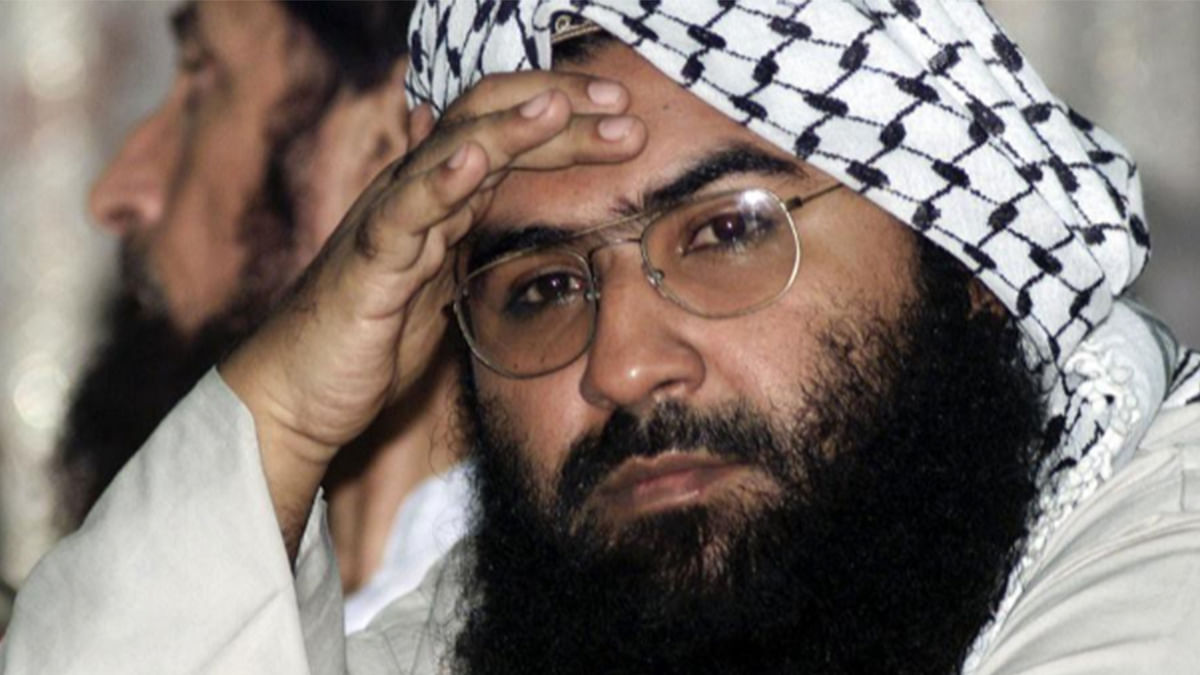
The PAF’s dilemma
As Air Chief Marshal Mujahid Anwar Khan, the Chief of the Pakistan Air Force , would have sat down to plan an appropriate response, he would have found himself in uncharted territory. The PAF’s self-proclaimed USP — its dynamic operational flexibility and aggressive doctrinal methodology — was unsparingly weighed down by the problems plaguing the Pakistani nation, especially its economic mess — which would be counterproductive to the PAF’s ability to deliver the so called emphatic blow, as well as sustain round-the-clock operations against India for a considerable duration — bleeding precious aircraft and fuel reserves required to fight a long lasting engagement.
With the surge in IAF’s flying quantum in February, the PAF had been forced to break discipline on the use of its 20-day general service aviation fuel reserve and would have been eating into its 25-day strategic war reserve maintained by Pakistan State Oil (PSO) sooner than later. Similarly as was noticed back in 1999 during the Kargil conflict, the F-16 and the older Mirage III/V aircraft fleets cannot sustain a lengthy state of operational readiness — consuming critical spares, weapon and flying hours meant for actual hostilities. With the US warming up to India in all spheres in the recent past, OEM support and supplies for the equipment and armament purchased through various US Congress sanctions in the last decade — ironically to be used in the war against terror — would be under scrutiny and literally come to a halt, further adding to the PAF’s woes. While the PAF has efficiently mitigated the spare and airframe calendar life issues with purchase of additional F-16s from Jordan (ADF version) and a mid-life upgrade (MLU) of its existing F-16 fleet through Turkey — any PAF military response would need to factor these crucial aspects needed to fight an extended all-out war with India.
Also read: 1965 Sargodha attack: How IAF hit Pakistan’s most protected base & destroyed 10 aircraft
PAF’s military aim post-Balakot
Pakistan’s geopolitical and economic considerations, when mated with data available from the PAF’s large force engagement (LFE) on 27 February 2019 , provides a good assessment of the PAF’s military aim towards the response towards the Balakot attack, which are as follows —
1 . Demonstrate ‘perceptible tactical brilliance’ of the PAF in a bold operation — restoring the measure of honour lost due to the Indian strikes a day prior in public perception
2 . Seize the military initiative back from the IAF — not letting India exploit the new normal
3 . Highlight — that the forces are in balance and the liberty of attacking at will without repercussions for India is not an option
4 . Aim for a quick outcome within an established time frame — avoiding escalation beyond the perceived combat threshold of an all-out war
5. Preserve — its force levels at all costs
This counterstroke, given that Pakistan was incapable of affording a full blown war with India — still had to be significant to convey an ‘impression’ to India and the world community — that Pakistan was willing to escalate the crisis and extended diplomacy was the only way ahead to de-escalate the crisis. Towards this a parallel peace posture would be propagated through the Pak Foreign Office.
Assessing PAF’s military preparedness
The Pakistan Air Force has a chequered history in the various wars with India. Widely showcased by Pak propaganda over the years as a pantheon of past glory for Pakistan — the PAF is a professional force which has always attracted the best human capital in Pakistan to man its diverse cockpits. In fact, the PAF has one of the highest rejection rates amongst air forces in the world, while clinically aiming at a high ratio of 2.5 pilots per aircraft cockpit— meaning it can sustain a greater sortie rate over a protracted conflict — with lesser number of aircraft.
In-spite of living in the shadow of a much larger Pakistan Army, the PAF has remarkably done well to update and increase its airpower assets over the last couple of decades; attempting to maintain parity with the IAF at the — technological, operational training and air war doctrine employment levels.
Post 9/11, widespread American aid and concessions as a close ally in the war on terror and the perceived western need to arm Pakistan with modern tactical weapons to match the Indian superiority threshold, ostensibly to avoid a nuclear meltdown in the region — has progressively helped the PAF in upgrading its F-16 Falcon fleet and erode Indian Air Force’s numerical and technical superiority in air superiority fighters (ASF) equipped with beyond visual range (BVR) air-to-air missiles. Currently PAF has 18 top of line F-16 C/D Block 52 (inducted in 2010), 28 F-16 A/B ADF (purchased from Jordan in 2014 and 2016) and 31 F-16 A/B MLU (upgraded by TAI, Turkey between 2012–2014).
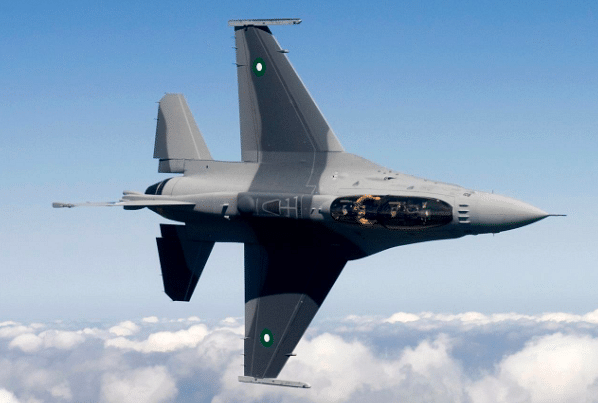
While the newer Block 52s are the most advanced version of F-16 with the PAF, the PAF has unwearyingly ensured that all its F-16s (less the Jordanian lot) are upgraded and equipped with the Northrop Grumman AN/APG — 68 (V)9 multi-mode radar and the AIM-120 C-5 AMRAAM missile through the various Mid Life Upgrade (MLU) initiatives. The Jordanian supplied F-16 A/B Block 15 ADF version is equipped with the APG-66 (V)2 and the AMRAAM. The AIM-120 C-5 Advanced Medium Range Air to Air Missile (AMRAAM) with its active missile seeker and a max range of around 100 km, is amongst the most advanced air to air missile operational in the world, widely used by NATO and close allies of the United States. Last known, the PAF has around 500 AMRAAMs in its stockpile.
The F-16 Falcon, armed with the AMRAAM missile, has given the PAF an edge over the IAF in beyond visual range (BVR) combat since 2010, a capability it had lacked back in the last war fought with India in Kargil 1999.
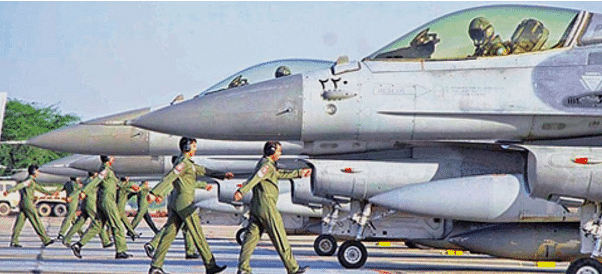
Alongside, the PAF has inducted the modern JF-17 Block I/II Thunder multirole fighter in large numbers to replace its ageing fleet of F-6 and F-7 fighters. The JF-17 program is a joint Sino — Pakistan effort, which has mostly Chinese avionics and armament. The onboard NRIET KLJ-7 Pulse Doppler Multi mode attack has decent performance and is teamed with the SD-10A (PL-12) active guidance BVR AAM, which is based on the technology used in the Russian R-77 (AA-12 Adder) missile. The JF-17 is also able to carry a wide array of air to ground armament; much more than the American supplied F-16. The Block II version introduces air-air-refuelling and the Block III will feature and AESA AI radar and the potent SD-10B AAM along with other updates. There are upward of 140 JF-17s in PAF service, with an aim to have a fleet of 250 in the next few years.
These modern PAF fighters are supported by an advanced and superbly networked Air Defence environment on the ground, as well as 4 Saab-2000 ERIEYE and the 4 ZDK-03 series airborne early warning and control (AEW&C) platforms. 2 more Saab ERIEYEs will be inducted by 2020 to give the PAF a total of 10 AEW&C aircraft — which will be able to efficiently provide 24 x 7 surveillance across Pakistan.
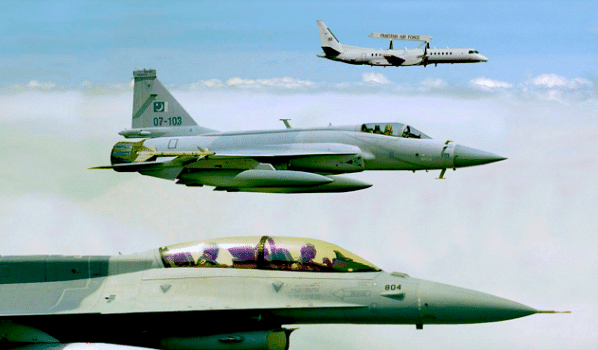
A noteworthy achievement for the PAF has been the continuous upgradation of its older Mirage III/V fleet over the years at a low cost fraction — thus keeping a realistic strike option in place. PAF’s Mirage fleet consists of 90 Mirage-III and 90 Mirage-V aircraft for interceptor and attack roles respectively. PAF modernized its Mirage jets in an MLU program named Project ROSE (Retro Fit of Strike Element) at Aeronautical Complex in Kamra starting in end 1990s. Despite challenges and problems, the ROSE program provided a platform to PAF to experience aerial technology integration and acquire experience, gaining confidence to undertake similar project with confidence in future, which include the JF-17s. The Mirage in the PAF service have received new capabilities that improve its performance in battle dramatically. The Mirage III have been equipped with the FIAR Grifo M3 multi-mode Airborne Interception radar and along with the Mirage Vs, have been modified to carry out night missions and sophisticated systems like SAGEM Forward-looking infrared (FLIR) imaging sensors, an integrated Electronic Warfare suite, air-to-air refuelling capability and integration of stand-off precision attack munition. Pakistan Navy also operates specially upgraded Mirage aircraft for its maritime missions, which are equipped with French-made Exocet anti-Ship missiles. PAF will soon get 30+ more Mirages from Egypt, which may be utilized for the maintenance of airframes and spares for the existing fleet. Interestingly, in spite of being a generation behind the under induction JF-17, the Mirage III/V has better low level penetration range and dash capability than the JF-17 — which with the use of stand-off weapons makes it an effective weapon delivery platform under most operational scenarios.
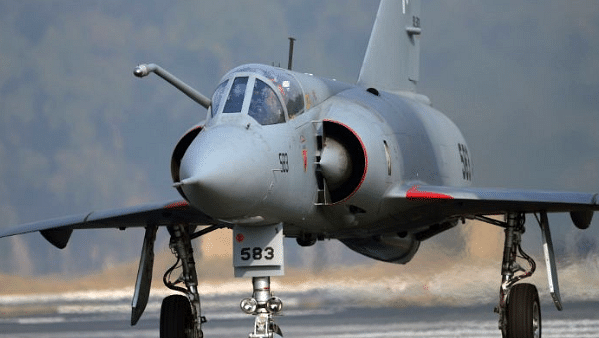
The PAF has also inducted four IL-78MP Multi-Role Tanker Transport (MRTT) from Ukraine. While the ERIEYE and the ZDKs can look deep inside India, the tankers can provide operational support for any PAF strike deep in the Indian heartland.

What is very visible in the PAF’s various newer acquisitions, operational and maintenance philosophies and upgrade programs – is its emphasis on widespread flexibility and reliability towards achieving a high sortie rate during crisis. The PAF has also focussed persistently on the right fit of platforms, a bang for the buck necessary to execute all facets of full spectrum, networked missions across its geographical bounds of operational influence.
PAF’s doctrinal evolution — stand-off munition/tactical land attack missiles
The PAF’s war fighting doctrine has primarily relied upon surprise and pre-emptive strikes as a definitive tool to neutralise IAF’s offensive power and gain numerical parity during the early phase of the conflict — This strategy has spawned out due to the limited defensive depth available to Pakistan geographically, as well as a mitigation measure towards the numerical superiority enjoyed by the IAF.
In the recent years however, proliferation of advanced air defence networks and surface to air missiles (SAMs) by India, has reduced the efficacy of ‘first strike’ as a full proof methodology for the PAF. To counter networks of these advanced integrated air defence systems (IADS), stand-off weapons have been adopted generously by the PAF.
A technology jump in integration of stand-off munitions like the 350 km range Ra’ad and the 550 km range Ra’ad 2 cruise missile, the 120 km range NESCOM H-2/4 SOW on the Mirage III/V & the JF-17Block II, the 60 km range Chinese LS-6 glide bombs and the Mk 80 bomb Range Extension Kits (REK) on the JF-17; along with JDAM munition on Block 52 F-16 — gives a stand-off weapon employment edge to the PAF — much like what the Brahmos, Spice 2000 and Crystal Maze give to the IAF.
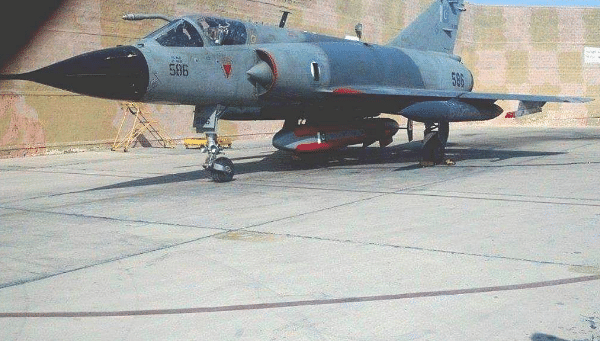
A major part of the first strike capability is also operationalised with PAF’s use of land attack missiles like the short range Nasr/ Hatf / Abdali/ Babur missiles and SRBMs like Ghaznavi and Shaheen — I, with varied manner of tactical & nuclear payloads, adding teeth to the attack options available to the PAF. Beyond the dedicated nuclear warheads the Pak Army SSMs targeting Indian cities carry, the Ra’ad and the Nasr short range missiles are also equipped with tactical nuclear weapon (TNW) in the range of 0.5 to 1 Kiloton to take on the Indian Army’s Integrated Battle Groups (IBG).
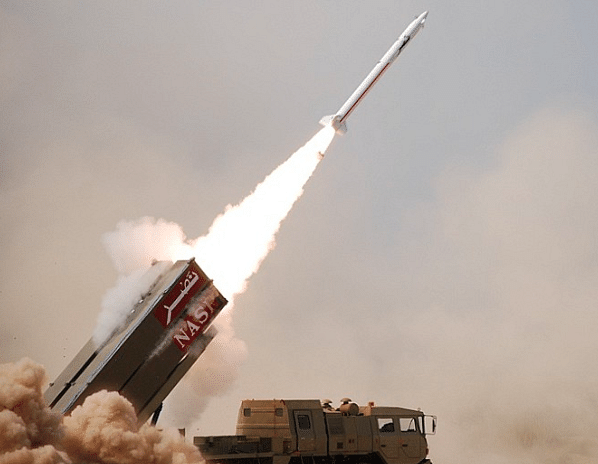
Within the ambit of Pakistan’s low yield nuclear strike philosophy, it’s possible that these TNWs may also be employed against forward IAF bases and aircraft concentration areas — to offset the dynamics of local air superiority in favour of the PAF.
It is this recently acquired TNW capability — which Pakistan will leverage in any conflict with India as a bargaining chip to get better military aid and political concessions from the western powers, especially the United States; as well as an acceptable nuclear threshold to engage Indian Army spearheads which penetrate Pakistani boundaries.
PAF’s doctrinal evolution — Large Force Engagement (LFE) training
The PAF has kept pace with the evolution of airpower and air combat philosophies over the years. It sees merit in employing large force, full spectrum mission packages as a doctrinal inclusion at the strategy level to achieve local air superiority against numerically superior forces. The PAF has been operationalising and consolidating the organisation and force level structures of large force engagements (LFE) — wherein it has benefited from participation in foreign exercises like the ‘Red Flag’ and ‘Falcon Talon’ with the United States, ‘Anatolian Eagle’ and ‘Indus Viper’ with Turkey and ‘Shaheen’ series with China’s PLAAF. Foreign deployments by the PAF, flying Dissimilar Air Combat Training (DACT) and LFE sorties at Red Flag and Anatolian Eagle have particularly helped the PAF F-16s train towards and achieving an excellent exposure to BVR combat, benchmarking same at an international level. In this, the PAF’s BVR employment tactics are modelled mostly on the USAF’s air combat tactics.
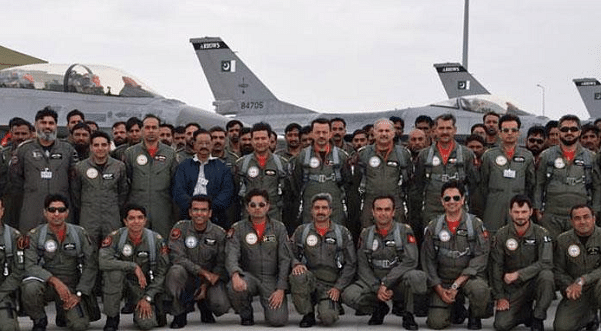
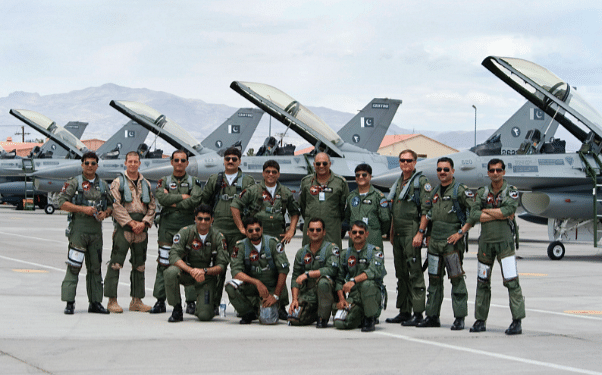
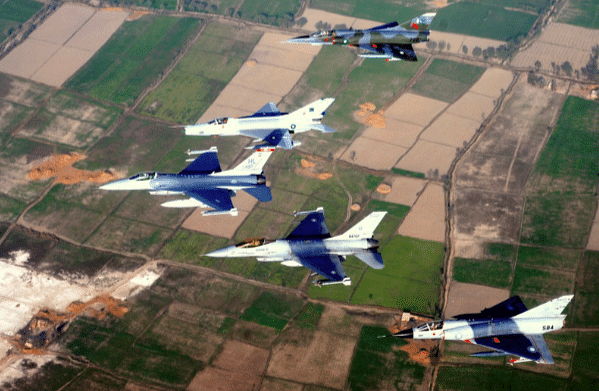
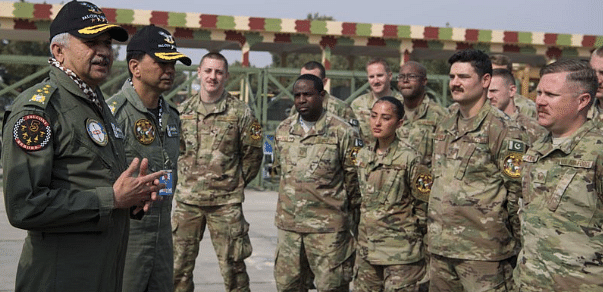
Incidentally, a major focus area for the PAF during the Sino-Pak ‘Shaheen’ air exercises — has been to extensively evaluate the operational capability of the PLAAF’s Su-27/ Su-30MKK/ J-11 aircraft. Practice close combat and BVR air melees with these aircraft has revealed significant intelligence on the performance and electromagnetic signatures of the Russian origin Su-27/30/ J-11 platforms and BVR missiles like the R-27 and RVV-AE (R-77 export version) to the participating PAF aircraft. Significant would be the digital mapping and knowledge of the Minimum Abort Ranges (MAR) of these missiles — which could give an edge to the PAF in planning effective BVR tactics against the IAF Sukhoi Su-30MKIs.
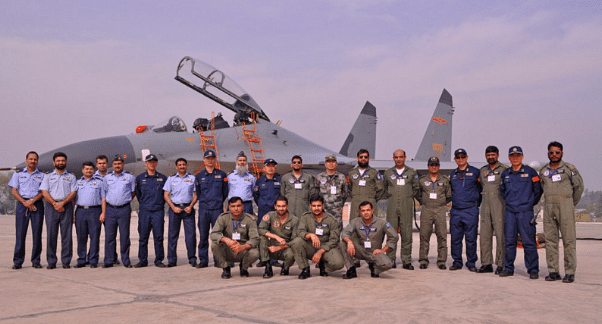
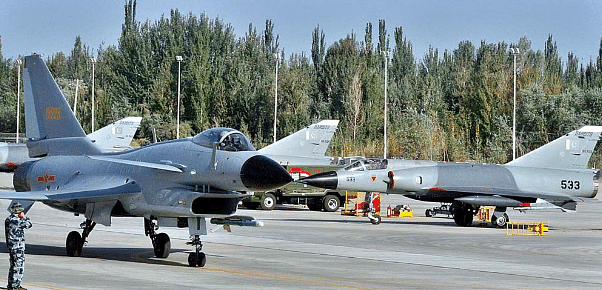
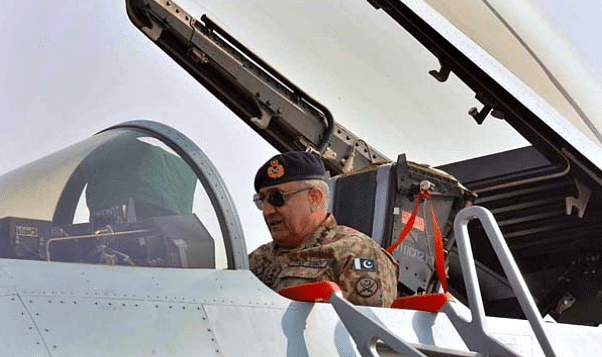
The PAF F-16s are known to be utilised as the long range aggressor component for these BVR engagements, clandestinely operating with the PLAAF during the exercise in Pakistan. The worthy ELINT capability of Saab 2000 ERIEYE AEW&C system, the Falcon DA-20 EW platform, as well as the ALQ-211 (V)4 Advanced Integrated Defensive Electronic Warfare Suites (AIDEWS) on the Block-52s — would been very useful towards building a credible threat library and jamming techniques towards the Russian radars carried by the PLAAF.
The PAF thus would perceive itself to have a good measure of the IAF’s Su-30MKI fleet, which is seen as the primary & most numerous threat for the PAF’s wartime missions — focussing its energy on developing a range of anti- Sukhoi tactics. Hence in any IAF vs PAF contemporary aerial engagement — PAF effort would aim to deny the SU-30MKIs any tactical operational latitude.
The red herring for the PAF however is the IAF’s recently upgraded fleet of Mirage-2000 I/TIs — which equipped with the relatively unknown RDY-3 radar and Mica AAMs, are capable of outmatching the F-16C/D Block 52s in BVR combat. Thus the Mirage-2000 I/TIs threat would be taken very seriously by marauding PAF offensive sweeps under most scenarios, the only solace being that the IAF had barely a squadron’s worth of upgraded Mirages at the time during Op Swift Retort.
The PAF’s consolidated strategic and tactical war fighting capability — especially viewed in the backdrop of India’s fast depleting combat aircraft squadrons and widespread distribution of its fourth generation combat aircraft strength, on both the Pakistan and China border to cater to a two-front war — does make the PAF a superbly equipped and very capable near-peer adversary in a limited war scenario with the IAF.
Why a localised operation in Jammu & Kashmir?
Post Balakot, the PAF rightly assessed that a conventional response with its fighter jets across the International Boundary may be counterproductive to its aim— with limited tactical flexibility against the estimated numerical superiority of IAF’s fourth generation aircraft supported by a well networked Integrated Air Command and Control System (IACCS) equipped with advanced surface to air missiles (SAMs) and ground radars. So it focussed its attack plan in the northern sector on the line of control in the J&K.
With the IAF having demonstrated its willingness to cross the Line of Control in J&K and launch stand-off precision attack munitions, the PAF only considered it par for the course to respond back.
Historically, both sides have compartmentalised localised operations in J&K as events short of total war. This crucial aspect, along with the non-linear terrain in Jammu & Kashmir suited the PAF tactically, providing enough manoeuvre space for multi vector large force attacks with surprise and deception — which in theory would overwhelm the small component of IAF aircraft in the area north of Jammu, effectively bisecting the IAF’s defensive capability. At the same time, any IAF Combat Air Patrols (CAP) over the Kashmir valley would not have adequate reaction time against an attack launched from/ near the Line of Control.
The PAF’s riposte — would aim to create meaningful pressure points on the Line of Control (LC), achieving local air superiority for a sufficient period of time to let the PAF strike aircraft demonstrate an advanced strike capability — that would be an order of magnitude higher than what the IAF showcased in its strikes.
Towards this— the PAF would target Indian Army formations located close to the Line of Control with stand-off weapons.
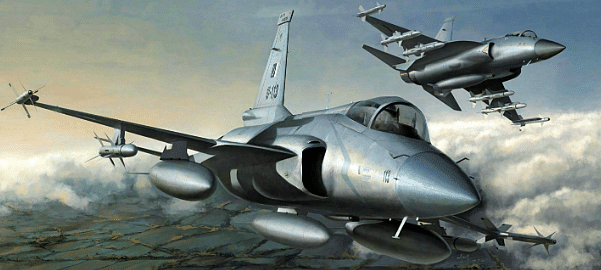
The PAF’s air operations directorate headed by PAF’s poster boy and the highly regarded Air Marshal Haseeb Paracha, DCAS (Ops), based on a well rehearsed warplan in the event of the IAF striking terrorist camps across the LC — sanctioned air strikes for 27 February against Indian Army’s 16 Corps positions near the Line of Control in Jammu and Kashmir at the following locations —
1. Krishnaghati (KG) top near Poonch
2. Bhimber Gali Brigade HQ
3. Narian Ammunition Dump
These would be targeted with H4 SOW fired by Mirage III/V and the REK GPS guided minitions from the JF-17s — both from a distance of 40–70 km. The NESCOM H2/H4 are copies of the South African Denel Dynamic’s Raptor I/II glide bombs. The maximum range of the H-2/4 rocket assisted glide bomb is 60/ 120 kilometres. After launch, the H-2/4 is guided to its target by IN/GPS, and uses Infra Red (IR) homing or manual TV guidance in the terminal attack phase for accurate targeting, before exploding a 600 kg warhead.
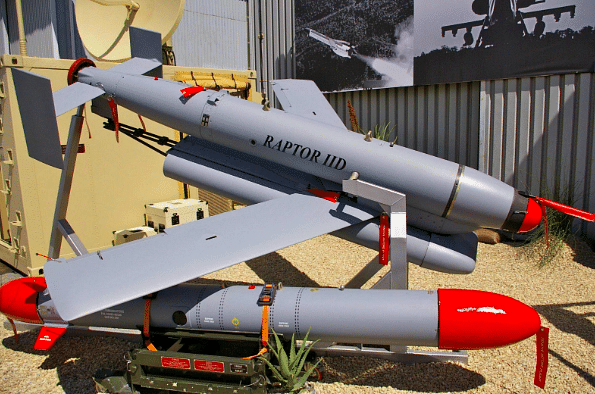
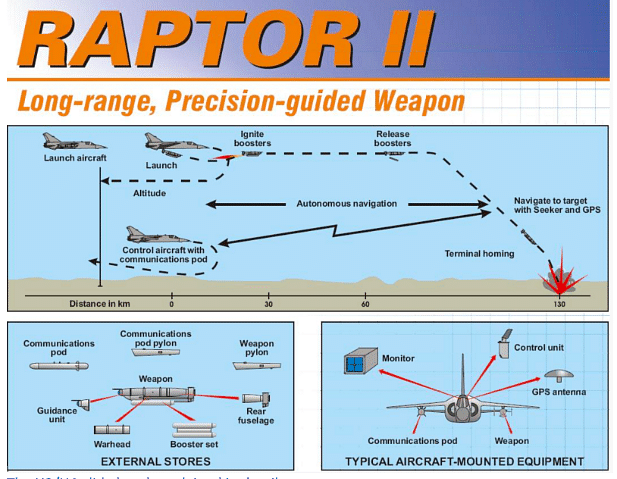
The JF-17 would fire stand-off GIDS REK (Range Extension Kits) munition, locally called ‘Takbir’, which is basically an IN/GPS guided glide bomb kit on the Mk 83 bomb, with a maximum range of 60 km. In effect, a REK transforms a dumb bomb into a force multiplier weapon.
The PAF wanted to send across a clear message that — military locations in India were legitimate attack targets by air henceforth — emphasising on the fact, that the Air forces are in balance.
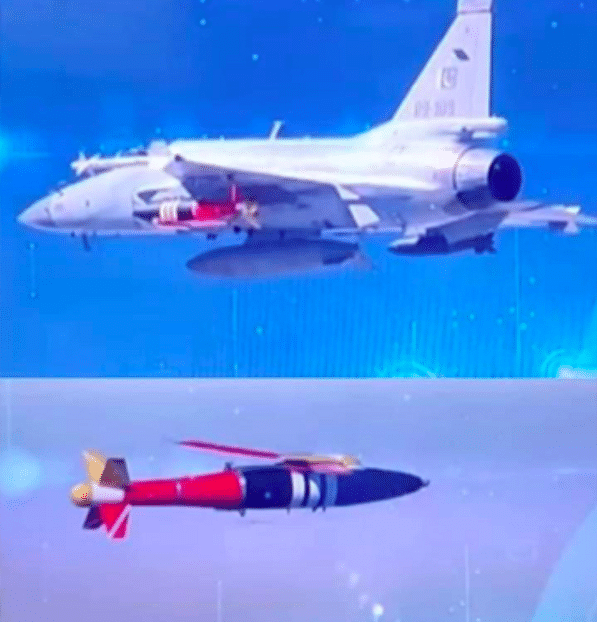
All in all, the large force mission engagement (LFE) against India on 27 February, also presented the PAF with an opportunity to validate its stand-off strike philosophies and newer generation weapons in actual combat scenarios.
To ensure this action was not interfered by the IAF in any manner, a large component of Air Defence aircraft would be utilised — far in excess than anything seen towards a single mission in the past 1971 and 1965 wars with India.
However, the shock and awe component of air domination, an inherent highlight of the PAF’s war fighting doctrine — was missing. That was until, a decision was made to deliberately draw in and shoot down IAF fighters, preferably the Sukhoi-30MKIs — ambushing them in a PAF dominated kill zone. The PAF was of the opinion — that the loss of a Sukhoi in air combat would effectively put the IAF on a back-foot.
At the same time, no loss of any PAF aircraft was acceptable
Towards this — the PAF accurately assessed that the IAF was in no mood to escalate and the in place IAF’s Rules of Engagement (ROE) would not permit the IAF fighters to fire on PAF aircraft — until fired upon OR in violation of the line of control. Hence there was to be no meaningful crossing over into Indian territory — with the PAF launching all its weapons and munitions from Pakistani territory inside/ on the line of control.
This riposte by the PAF on 27 Feb 2019, was accorded the official name — OPERATION SWIFT RETORT
The PAF’s Air defence forces had the following tactical objectives for Operation Swift Retort —
1. Achieve local air superiority with Offensive Fighter Sweeps and ensure that the PAF strikes went through unscathed
2. Segregate and block the IAF Defensive Counter Air (DCA) elements — preventing them from interfering with the follow-on PAF strikes
3. Engage and shoot down IAF Defensive Counter Air (DCA) aircraft— ‘engage’ the Sukhoi Su-30MKI, ‘avoid’ the Mirage-2000I/TI’
4. Post action Barrier Combat Air Patrols(BARCAP) in POK to prevent any IAF counter-intrusion into POK
5. De-escalate once mission objectives were achieved.
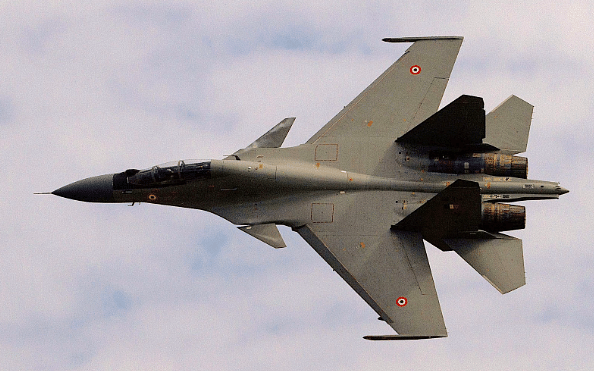
The ‘deliberate’ decision to shoot down an IAF aircraft — launching air-to-air missiles from own side of Line of Control in violation of existing rules of engagements (ROE)— reflects how far the PAF is willing to go to achieve tactical surprise and psychological dominance over its bête noire and nemesis — the Indian Air Force. The PAF was upping the ante and — the IAF, oblivious to the PAF’s endgame to fire AAMs across the Line of Control — was supposed to walk right into the PAF’s trap.
Or so, that’s what the PAF assumed!
Op Swift Retort: Participating PAF squadrons
Operation Swift Retort was led by the tacticians of the Combat Commander’s School embedded within the formations, with the mission commander (an Air Vice Marshal rank officer) flying onboard the Saab ERIEYE.
The Order of Battle (ORBAT) for the Op was as follows-
Mission Lead: Saab 2000 ERIEYEAEW&C from №3 Squadron — one aircraft at 33 Tactical Wing, Minhas/ Kamra AFB, one aircraft operating ex- Sargodha AFB
Offensive Sweep/ BARCAP: F-16 A/B MLU from №9 Squadron — ‘The Griffins’ at 38 Multi-Role Wing, Mushaf/ Sargodha AFB
Offensive Sweep/ BARCAP: F-16 A/B MLU 29 Squadron — ‘Aggressors’ from Combat
Commanders School (CCS) — at 38 Multi-Role Wing, Mushaf/ Sargodha AFB
Offensive Sweep/ BARCAP: JF-17 Block I Flight — ‘Fierce Dragons’ from Combat
Commanders School (CCS) — at 38 Multi-Role Wing, Mushaf/ Sargodha AFB
Escort to Strike/AEW&C: JF-17 BlockII from №14 Squadron — ‘The Tail Choppers’ at 33 Tactical Wing, Minhas/ Kamra AFB
REK Strike: JF-17 BlockI from №16 Squadron — ‘Black Panthers’ at 33 Tactical Wing, Minhas/ Kamra AFB
H4 SOW Strike: Mirage III/V from №15 (TA) Squadron — ‘The Cobras’ at 33 Tactical Wing, Rafiqui AFB
Electronic warfare: Falcon 20 EW from №20 Squadron — ‘The Blinders’ at 33 Tactical Wing, Minhas/ Kamra AFB; operating from Sargodha AFB
The following force level was allocated for Op Swift Retort from the above outfits –
8 x F-16 from 9 Sqn
4 x F-16s from 29 Sqn
8 x JF-17s of CCS
4 x JF-17s from 16 Sqn
4 x Mirage from 15 Sqn
1 x Saab ERIEYE from 3 Sqn (another on stand-by)
1 x DA-20 from 20 Sqn
The offensive element for Swift Retort hence include 12 x F-16A/B MLU, 12 x JF-17 Block I/II and 4 x Mirage III/V plus combat reserves at formation level – total of 28 aircraft + reserves
To support Op Swift Retort, the PAF would carry out activation of all its bases abeam Punjab, Rajasthan and Gujrat — aiming to showcase regular flying — as well as undertaking deception vectors towards the International Border to keep IAF Defensive Counter Air (DCA) CAPs tied up south of Jammu— not unlike what the IAF did when the Balakot strike was in progress.
The PAF exclusively handpicked its best crews from the CCS and specialist Squadrons for Op Swift Retort. The PAF’s ‘best of the best’ would take on regular rostered crews from the IAF’s Defensive Counter Air (DCA) effort in Jammu & Kashmir.
Opening moves — post-afternoon 26 February
By 1400H on 26 Feb post the Balakot attack, General Qamar Bajwa had met Air Chief Marshal Mujahid Anwar Khan even before the NCA meeting — giving his tacit go-ahead for a counter-stroke by the PAF.
The PAF under pressure from the Pakistan Army to quickly launch its riposte — so as not allowing time for negative public perception in Pakistan to build up beyond ISPR’s control after the Balakot strike by the IAF — decided to spearhead its riposte abeam the Naoshera-Rajouri-Poonch sector of J&K in broad daylight in the morning hours of 27 February , which was the very next day— a time when it was estimated that the IAF’s guard would be down to a great extent.
The PAF had practiced this contingency many times in the past and had an updated attack plan which was activated to take on a post Balakot like situation, focussing on a response by the PAF in event of IAF strikes on Pak supported terror camps. In the afternoon, after a high level coordination meeting at Sargodha, elements of the above mentioned squadrons practiced the specific sequence of planned events with aircraft rendezvous (RV), formation keeping and weapon release (SOW)/ BVR combat drills till the Forming up points (FUP). FUPs were the jumpstart points about 50–75 km in the rear, through which the various elements of the mission would channel-in inside the Op zone.
An Impression of a routine large force exercise was given to the IAF AWACS and ground radars keenly monitoring the event from across the border. To give credibility to routine training/ operational flights, most of the PAF aircraft flew with their Identify Friend or Foe (IFF) transponders ON, which are routinely switched off during offensive missions.
In between — the cat and mouse play between the IAF and the PAF continued, with the regulation runs towards the International border to draw out on-station combat air patrols (CAPs) on either side.
Meanwhile, the Indian Air Force was taking no chances, with all combat aircraft mobilised to their wartime locations by the evening of 26 Feb. Throughout the intervening night of 26/27 Feb, the IAF was on maximum alert expecting the PAF’s counter-attack — wherein Indian AEW&C aircraft scanned Pakistani skies for any sign of protracted activity towards India — with all vital zones on the western border being well covered by on-station Combat air Patrols (CAP), flying harmonised defensive patterns.
On the other side, the PAF AEW&C’s and ELINT aircraft especially focussed their attention on the area north of Pathankot for radar & electronic emissions of Indian combat jets on CAP missions in Jammu & Kashmir to zero their location and types.
The PAF deduced the following basis the surveillance and existing Air Intelligence on the IAF-
1. There was at least one Indian Air Force 4th Gen aircraft Defensive Counter Air (DCA) CAP for defence of the Kashmir valley airborne 24×7.
2. The IAF’s Su-30MKI and Mirage-2000I/TIs were identified to be part of this DCA mission operating in the Kashmir bowl.
3. There was a Squadron of MiG-21 Bison aircraft permanently based at Srinagar AFB, mounting Operational Readiness Platforms (ORP) at Srinagar and Awantipore AFBs. These also flew an occasional DCA CAP mission in support of the Su-30MKI/Mirage-2000I/TIs. However, the PAF did not consider the Mig-21 Bison as a worthwhile threat to the planned attack.
The PAF’s counterstroke would consist of 30–40 combat aircraft on 27 Feb morning, which would initially give an impression of routine flying, converting into attack vectors — specifically exploiting the gaps around the ‘change over times’ of the IAF DCA air patrols over their holding zones in the Kashmir valley.
This would ensure that the IAF CAPs would not have adequate endurance to take on the PAF threat.
The PAF was ready to deliver the coup de grace, with 27 February 2019 to go down as the ‘surprise’ day in the history of the Pakistan Air Force, where yet again its material and martial dominance would be well established over the Indian Air Force. The PAF had the numerical superiority, technology ascendency and the will to attack at the time and place of its choosing. And the best fighter pilots from Pakistan would be involved towards execution of the highly bold Op Swift Retort.
As has been a case time immemorial, the Pakistan Air Force did not cater to the resolute resolve and superlative training levels of the Indian Air Force fighter pilots. But then, this is another story, a story which did not end very well for the ambitious goals set by the PAF for Operation Swift Retort.
Also read: On this day 54 yrs ago, another IAF hero shot down a vastly superior Pakistani fighter jet


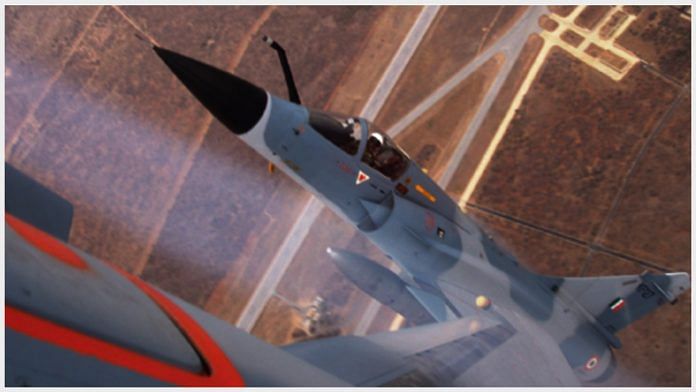

Totally biased and unprofessional article..Making joke of IAF in the eyes of every sensible and honest person.PAF totally owned IAF on 27th february captured IAF pilot and completely achieved their target by bombing their designated targets..F16 downed only in IAF dreams for proof IAF MIG 21 wreckage intact with all missiles and fuel tanks available for any independent journalist for inspection.
Stop making indians fun in international community.Accept your weakness and Improve
I have been too late to comment on it but honestly bro, you must hv hit your head real hard..
i dont know whats the purpose of this writeup, but you can fool around here by doing what you want but you are lowering your own status and credit by doing such writeups. comeup with something making sense i will support you definitley.
Thankyou..
Have a good day sir.
Just read this pack of lies while having a CUP of Tea.
Guess what? My Tea tastes more Fantastic now?
Never knew “The Print” uses bollywood script writers for covering serious war business.
I wouldn’t like to insult anybody intelligence.the author if this article has not provided anything to substantiate anything.
Firstly no proof of any planes been shot down in India territory, secondly one spice missile would have sufficed to blow up the target building however your showing points where the missiles have penentated the building, bearing in mind the same building was shown on international media outlets.
WHY IS UR PUBLICATION spewing fake propaganda and spreading hate. Pakistan even sent the indian pilot back, who 8ncidently commented how well he was looked after.
We are neighbours and should try to better ourselves and get on. Our masses are poor and Hungary and yet your feeding the elitist agenda.
If you don’t have the decency to print the truth then don’t spread lies and hate.
Care to explain how just one SPICE was enough! Are you an expert? What about the propaganda of ISPR that it’s been spewing since 1949! You guys blindly believe your side of news and our side is just propaganda! Is this a one way circus going on or what!! 4 wars we’ve fought, each started by Pakistan. Pakistan hasn’t won any and then tells it’s public that they won each war and it’s false propaganda by Indian media that India won. What a load of bollocks!
I feel sorry for indian people how their media and govt making them fool. Abhinandan plane all missiles were intact then how can he shot down f16 I think with his blows. Both airforces are professional and ready to lay their lives for their country but this is reality PAF is world’s one of the professional airforce and has top pilots of the world accept the reality other wise ur own govt said it would be different if we had rafales I think u know its meaning
The comments of several PAK readers on this article proves how biased their point of view is, ignoring obvious involuntary evidence provided by their own DGISPR and PM. Some of the comments even refer to these official statements as ‘confusion’. A confusion with such clarity – that’s what it seems to be, informing the world that a second pilot was seriously wounded and admitted to a specific hospital. WOW! looks like someone in the street watching the sky that day picked up the phone to call and inform DGISPR. Believing the stranger’s story, the DGISPR informed the PM, who believing DGISPR announced about the second pilot in their Parliament. LOL
For all Pakistani readers, below are a few of the past confusions that the Pakistani army had in the past, which may be clear now for all Pakistani people.
Confusion 1965 – Sqd. Ldr. A.B. Devaiah downed the most advanced PAF fighter of those days, F 104 Starfighter, with IAF’s humble Dassault Mystère IV. The confusion was made public 30 years later through PAF’s appointed writer, John Fricker on his book about PAF.
Confusion 1971 – Ever heard of a place called East Pakistan? To avoid any confusion like your DGISPR, refer to history books. If your history book tells you that West Pakistanis gifted East Pakistani to the Bangladeshis, it could be a similar confusion.
Confusion Kargil – Another confusion to then Pakistan Army and its Genera – Kargil heights was not occupied by the Pakistani army regulars but by militants. Now everyone including their then PM, ISI chief and President acknowledge it was a confusion that they did clear to the Pakistani people.
Confusion Osama – Another confusion about whether Americans fooled the Pakistan Army or whether Osama fooled the Pakistan Army or whether Pakistan Army fooled Pakistanis and the rest of the word.
As Indians, we welcome more such confusion as long as the result continues to be the same as the past.
Leave Osama, Pakistani Army or Americans did not use word confusion about Osama.
The confusion was shooting down own Mi17 helicopter by IAF. Confusion is that you slumdogs are still paranoid with Pakistan when Chinese forces have taken away 4000 sq. km. of land Ladakh after killing 20-100 Indian soldiers by breaking their arms, legs and necks. Modi at first claimed that no Chinese incursion took place, the very later he visited the Ladakh but not Galwan Valley.
World’s most shameless nation which has lived under Muslim minority rule as ‘slaves’ for 1200 years, suffered humiliation at the hands of a small country Pakistan on Feb 27, 2019. But still these shameless Hindus recall half a century old 1971 event, and imaginary shooting down of advanced aircraft by shamelessly mentioning half truth and imaginary braveries.
Indians are hellbent to make a fool of themselves by beating the F-16 drum over and over again. It’s typical of Indians, for their childishness is no secret from the film industry to media outlets. This article itself is a typical example of that very emotional but erratic analytical approach to things relating to Pakistan that don’t seem to add up at all. Such articles deserve a laughter for one that they can’t even hide their nationalistic bias, let alone maintaining journalistic professionalism and objectivity.
Abhinandan’s Russian plane could carry only 4 air to air missiles and all four of them were collected from the crash site. They were displayed for the media by the ISPR. How did he manage to shoot down an F-16 without ever firing a missile? Maybe with his blows. Secondly, the entire world knows nothing happened in Balakot except missing the mark badly and the IAF had to lick dust for failing to achieve a meager target in the first place and then being unable to stop PAF, a rather smaller force, from intruding and bombing Indian territory while shooting down a MiG-21 and an SU-30. What IAF could manage to do at best, on the other hand, was to shoot down its own chopper. I will definitely make some noise for the Indian bravado in maiming their own friendly fire kill.
Hell yeah the media Lollipop given to all indian….i appreciate the way writer has twisted all the facts in IAF’s favor whereas it was a daymare for the IAF & ultimate Humiliation for thier Sukhoi’s + Bonus was Abhi nandan, or you think that also didn’t ever happen & abhi nandan was a Pakistani actor
You guys Cure corona from Cow’s pee …your scientist’s says Einstein theoies are wrong …no wonder if you say, sob ass can be re-absored in your mum’s vagin@ indian will agree with that …anyways move forward lets hear how many shortcomings IAF suffers
IAF sources told NDTV:
Among the Indian Air Force’s fighters which were targeted were two Sukhoi-30s which managed to evade the AMRAAMs which were fired at close to their maximum range of 100 kilometres. Fully defensive and desperate to escape the incoming AMRAAMs, the IAF Sukhoi-30s escaped being shot down but were unable to retaliate the F-16s because they were out of position and their own missiles, the Russian R-77s, did not have the range to realistically engage the Pakistani fighters. that the Russian missiles do not match its advertised range and cannot engage targets which are more than 80 kilometres away.
Pakistan army’s only one goal has been Kashmir. 73 years have passed and still it’s a dream for them. On the other hand you have lost half of your country in 1971 and you still have the audacity to come and bark in a Indian news channel. Ha ha
Still waiting for indian proof of them shooting down an f 16. They can count 300 terrorists they claimed to kill but cant show any proof of the f16??? If it had been shot down then it should have been found anywhere between south kashmir and where abinandan aka failed pilot / national hero was shot down. Even the u.s said pakistans inventory is full. When will india allow u.n obserbers into jammu kashmir
I think you dont read newspapers or watch news channels. I think you should because that will keep you updated about the statements that your fu***ng PM give every time and at last creates confusion for the people of pakistan.
IAF has already showed the radar images.
Your PM can tell lie, your forces can tell lie but technology nevers.
The wreckage of the f16 downed by WGC ABHINANDAN fell in POK, which your forces took as an advantage and did’nt showed it to the media.
And if still you didnt believe this then nothing
can be done.
No problem we can understand the situation you are facing. No one accepts its failure.
The publisher is fooling here the whole world with the incorrect information. Pakistan lost none of the aircraft in this aerial trial over Indian Air Force. However, Indian should be thankful to us for not killing the other Mirage-2000 formation which came beyond the ill fated Indian aircraft. Ask Abi Nandhan before publishing the next part.
IAF shooting down it’s own mi-17 helicopter (taking it for a PAF aircraft) deep inside IOK reflects the confusion and extremely tense situation prevailing in the IAF ranks from top to bottom.
It also reflects their level of training, so called commitment, resolve and preparedness.
It’s bundle of false information
And the author after narrating the biased fairy tale forgets to shed light upon the events after PAF response. He goes to sleep.. Dreaming of Rafales…
Good write. However, quite naturally the Indian author give a bollywoodistic tinge to the whole story when he mentioned that few Indian pilots faced the large formation of enemy and forced them to retreat thus making a history.
It’s been a Year now. All the international experts have rejected Indian claim of shooting down of F 16.
A master story teller. Good details with some cooked up narratives. In fact the Indian strike was an embarrassing goof up. Now that most of the details are out, a correction in the narrative is in order. All Indian bombs missed. Thankfully, nobody was killed otherwise the PAF would have to retaliate in kind. The PAF shot down a SU-30 and a Mig 21. The Indians shot their own helicopter. In a desperate search for heroes, Abhinandan was awarded for being shot down and the other pilots for missing targets. The fratricide guys were court martialled. In fact Modi should have been kicked for being an air strategist and half the IAF top brass fired for telling lies. After all how can you lie over the bodies of your own crew.
when is second part expected?
Very informative and well researched . Eagerly waiting for the next part. Please publish soon.
There will be plenty of versions from both sides, with each claiming victory. Irrespective of which version one believes, some events cannot be challenged, IAF breached Pakistani airspace and dropped their ammunition which PAF and their air defence systems failed to stop. Pakistan cordoned off the bombed area for 45 + days and did not allow anyone into the vicinity. Next day PAF hit back and dropped their quota of ammunition which missed any important target. IAF lost a MIG 21 and it’s pilot was captured. Everything else is speculation with no definite evidence. Make of this what you will.
conveniently forgetting the Fratricide which was basically the biggest human tragedy of the entire balakot/retort skirmish that nobody disputes!
Being from the other side of the border, I must say it’s a reasonably good article. But there are some sweeping statements about PAF without any corroborative references or evidence.
LOL. Indians still stuck dreaming shooting down an F 16. Please move on, no one in the world except deluded Indians believe the Junk MIG 21 shot down anything. There are no proofs that you have presented that the world considers anything to be taken seriously. All you have are your own inferences from statements made by DG ISPR, Bollywood inspired stories of Pakistanis lynching their own pilot, and some random videos of puff of smoke and smoke trails on Youtube. LOL comoon would you believe us If we used these as proofs?
Haha…
Why PAF was not able to prevent balakot airstrike.IAF breached ur airspace whilePAF was incompetently watching.
Idiotic pakis always believe in heroics of their incapable defences services.
May be Balakot airstrikes they will remember for long.
F 16 shooting down by MIG bison is a tight slap on incapable and ill trained PAF.
You Indian always convince on Bollywood type proof given by Sameer. Balakot is blunder done by IAF. .
Sumit give it up! No Pakistan Air Force F16 was shot down and this has been verifed by a count by the US of Pakistani F16 aircraft, as reported by Foreign Policy magazine, a highly reputable US publication. The Indian Air Force strike at Balakot was a dud as it missed its target, again verified by independent sources (including Australian and others) using satellite pictures of the site before and after the strike. At the same time the undeniable facts are that an Indian MiG 21 was shot down by the Pakistan Air Force and its pilot captured and that an Indian Mi 17 helicopter was shot down by friendly fire and tragically the six military personnel on board died. It is quite clear that in this instance Indian Air Force was outclassed by the Pakistan Air Force! Accept this and learn some lessons, and that is the only rational and sensible approach to avoid making the same mistakes again.
So you’re saying that DG ISPR made unfounded tweets about 2 pilots in custody with details to the extent of one of them being in serious condition in a particular hospital. And later showed the good sense to delete them. BTW, how did you guys manage to lose a JF-17 a few days later in an excercise? Surprising to say the least that you guys do live firing during a training exercise when your own aircraft are in the air! Smells like a cover up. OK, maybe Abhinandan didn’t shoot down an F-16 but confused it with a JF-17 which could look similar at a distance and from certain angles. What is not in doubt is that PAF did lose a fighter that day.
These things happen in the Fog of War and initially there was a lot of confusion on both sides. Your Govt and Forces denied losing a MIG 21 initially, but later changed their stance and admitted the loss. So Initially 2, 3 different companies of the army reported capturing the same pilot Abhinandan and hence the confusion on DG ISPRs part. Everyone know it was Abhinandan who was also treated at the CMH as well. So please stop making stuff up out of nothing to keep your selves happy. The US DOD officials did a count of the PAF F 16s and confirmed none was missing which was published in Foreign Policy Magazine. Of course you guys don’t believe this either and quote a fabricated article from Hindustan Times to say Pentagon denies doing the count LOL.
Please wake up and ask yourself where are the gun camera footage from your planes, there must be a footage of an F16 being shot down??? Or ask yourself that your Air Force must know the location and coordinates of F16 wreckage so why couldn’t it pick it up on satellite and show the wreckage to the world??? Ask yourself why were your mighty Su30s chickening out trying desperately to evade AMRAAMs fired by PAF and couldn’t fire a single missile of their own??? Ask yourself how such a well trained air force which you guys think IAF is could shoot down its own helicopter killing 6 of its own soldiers???
Funny even after all of this you guys have the audacity to say such things or write such articles as this one.
LOL I think you saying PAF maybe lost a JF17 instead of F16 and even your Govt and Air Force might not know since they look similar shows you know nothing about aerial warfare. This is a new story all together from the Indian side. The world is getting tired of hearing these stories. Stop embarrassing yourselves now. No F 16 was shot down, there is no evidence that any one in the world accepts to date.
LOL and again another made up story only Indians believe. PAF didn’t lose any JF17 in exercise a few days after 27th Feb.
Amazing analysis and a well researched paper. I was totally engrossed while reading it. I am looking forward to read the next part
Seems quite well researched.
My only question is ….why the jingoism about superlative performance by IAF ??? … when your own article speaks of the PAF displaying better vision, customised modernisation of its platforms (within their resources) and greater flexibility in conduct of operations ?? It also highlights the supposed vulnerability of Su30MKIs to BVR wpns becuse of which they stayed at extreme rgs ?? Can we just rest easy because we have a few upgraded Mirage 2000s ? The F16 kill was the only saving grace …that too happened by pure good luck, presence of mind and good dogfighting skills at close range by Abhinandan ….otherwise it would ve been only loss of a Bison aircraft on our side.
Nobody believes in F-16 fictitious kill except Indians.
If your SU-30s has to stay at extreme ranges, how can you expect that they would allow mig-21 to come closer.
Mig-21 was a piece of cake locked by more than 4 aircrafts and as soon as he crossed the LoC, leader of the formation himself pressed the trigger and called Fox-3.
If read carefully, article is completely pointed on the training, planning and capabilities of just PAF. Almost zero info is given about plaNS and training of Indian airforce. Read last para carefully you get what I am putting forward.. it’s not at all wise to make any judgement on IAF since it’s the overall analysis of PAF not IAF…
This article clearly lacks any references and based on the assumptions of the writer himself.
Training and planning of the IAF can easily be evaluated from the shooting down of its own MI-17. Please don’t present any other reasons to cover up the incompetence.
Radars of SU-30s and Mig couldn’t sync up due to heavy EW and jamming. IAF was at the state of complete disarray when it was under attack.
Well said and true. It’s funny how India got 2 of their planes shot down, and downed their own helicopter which showed it was in a state of complete unpreparedness and also showcased their poor training, yet the author here is somehow saying Pakistan’s operation Swift Retort wasn’t a success and it was because of Indian Air forces training and resolve LOL.
Do you really think F16 was struck down by a Mig21 ? hahahaha what the…
There was no F16 downed, and you conveniently ignored the Mi17 that would never have been downed had it not been for PAF retort! The Mi17 is the greatest human tragedy of the event that nobody disputes
Sameer, well researched and articulated. How one question befuddles me ….India has a Defence Budget that’s 5 times Pak for years now …. sld not the IAF achieved such a massive technological advantage over PAF that the 27th adventure by PAF sld have resulted in massive losses for PAF …. instead we discussing score lines ? PAF sld never have had the gumption to Counter strike. Who in the INDIAN ESTABLISHMENT ISS RESPONSIBLE?
Our stupid Defense Acquisition Council has impoverished our defence courses especially the IAF. Congress Govt after 2004 has made it worse with no new aircraft in the inventory after inducting Sukhoi. Quite startling to see that when the great economies are looking to induct 5th Gen aircraft, we still are evaluating 4th Gen aircraft vis a vis MMRCA 2.0. God knows who will be the winner. No one seems fit. Rafale won’t come at $15 billion for 114. AMCA, the Indian so-called 5th gen aircraft won’t come before mid of 2030s if everything goes as planned.
Wait for second article, article doesn’t say anything about IAF?
This is what you call overconfidence.
Just wondering why nobody is raising questions about self-shooting of the helicopter. Just imagine the amount of Panic that PAF created in Indian control rooms on that day.
At 2:20 listen “Doosra Bandah” https://www.youtube.com/watch?v=ETkxbP9aqZo
This proves F16 down, which Ghafoor accidentally revealed and backtracked on that day.
Perhaps you would take out sometime to read US report on the count of F 16s. They are still the same as they were at the time of purchase. Moreover New York Times also states Pakistan victorious. That is a neutral report.
Doosra banda doesn’t prove F16, if your car key is missing would you run to say your car is stolen or would you actually check the car? a year and not a single bolt let alone an F16 has been proven!
If IAF was better why did it not escalate after PAK attacked??
A well analysed paper with a detailed research and pragmatic professional assessment of the PAF’s opl preparedness. It will be interesting to read the next part. Well done.
print is a jehadiNaxal prestitute khabrandi gaddar channel. printIn will be wiped out under sharia.
This is one of the best pieces of journalism I have read from any of the Indian media. Don’t know how much truth is in this but very detailed, descriptive and thorough. This kind of journalism is what we need more. Thank you and keep up the good job.
i can only laugh at this comment. Saying “don’t know how much truth in this” and then praising the detail, description and thorough. What an idiot.
One can write a million pages filled with description and thoroughness, but if its all fiction than who cares. Truth comes first.
I agree that this is a very well researched article and is accurate in describing the Pakistan Air Force as a very professional organization and the strategy and tactics it used. . I think the author should have stayed true to his analysis rather than veering off into jingoism by attempting to justify Indian Air Force performance. The facts are that the Indian attack at Balakot was a bust as verified by independent analysts. The Indian Air Force missed their target! The following day the Pakistan Air Force was very effective in electronic warfare and neutralized the Indian Su 30 MKI, reducing them to hapless bystanders. Wing Commander Abhinandan had his communications jammed and was shot down by the Pakistan Air Force. There is absolutely no evidence that he shot down any Pakistani aircraft. Incidentally, Abhinandan’s MiG 21 Bison was a highly capable upgraded aircraft with state of the art radar and avionics. In some ways more advanced then the Pakistan Air Force’s mostly early model F-16. The author mentions the objectives of the Pakistan Air Force and I believe that an impartial analysis would show that they more than achieved these objectives. For an excellent analysis of how the Pakistan Air Force outclassed and dominated the Indian Air Force in February 2019 I would recommend comments by a highly respected Indian Defence Analyst, Praveen Sawhney, available on U-Tube.
This is all bullshit.
Just watch these two videos and see how IAF was on the mercy of PAF on 27th.
https://defence.pk/pdf/threads/pakistan-air-force-operation-swift-retort-mujahideen-e-aflaak-ko-salam-2019-part-1-2.635510/
Very well researched and factual account of PAF’s tactics, capabilities and abilities..While there plan’s are brilliant and audacious, they more often than not falter in their assessment of IAF’s capabilities and execution..It is a testimony to the ultimate edge which the IAF pilots probably have due to better training, management of resources and above all the individual grit and determination of the pilots themselves.. Ultimately, it’s the Man behind the Machine that matters..Wing Cdr Abhinandan is a prime example of that..
How do you know know this is factual? What sources does he offer. It could mostly be an imagined write up sprinkled with some elements of truth.
Well written article which is prefaced with the promise of no jingoism. Not sure that’s the case though. Each side has a different narrative, with the Pakistani side so much more believable – from the Pulwama incident “holes”, to the Balakot target unaffected post IAF strike, the large number of purported casualties that went without trace, the fake testimonial propoganda around the casualties, to no wreckage of the F-16 shot down and Abhinandan’s missile warheads that were presented intact. Add to this footage of the burning IAF SU-30, and the mauling of Abhinandan – which country’s jingoistic narrative should one believe?
Spotted a Pakistani in Indian name
Seriously, the burning Su 30 and missile warheads. Seems you haven’t counter checked your points.
Fairly complicated mix up of PAF. Look like Paf has achieved a near parity with IAF. It will be very educative to IAF to get to know the PAF achievements while missions in vazirstan.Also whether PAF has any support from military satellites either its own or by china. It looks like Turkey is slowly turning into Pakistani supporter to the exent that it will offer PAF the needed depth by passing Afghnistan. I wonder whether PAF can launch F-16 from bases in Turkey or may use Turkey air space for running away from IAF long range attack aircraft as a safe zone. Turkey is still a member of NATO. Hance it will be prudent for India to manage its relationship with Turkey intelligently to deny PAF any advantage. The doctorine of max force in first strike itself by pakistan did not succeed druing 1965 hence it is unlikely it will again use the same tactice in next comat is debatable. IAF has a challenge of creating a pressure points over southern pakistan and effectively draw down the PAF from norhern India.
Not a factual newspaper report, just another biased story with some facts ingrained to try and give it credibility.
Pakistans PM and ISPR were very factual ! Saying they shot down 3 pilots and changing it to 1 after realizing it was their own 2 PAF pilots of F-16 !!! Complete pak population is under its armys fake propoganda !!
Then counter it point by point, if you will.
All bullshiy. India don’t have guts to start war against Pakistan. They are in dark, no idea about what Pakistan is capable of.
India – Pak fought 4 wars and all went against pakistan. So we are well aware of pakistans capability ! Pakistan doing great job fooling its population.
I think in this case it is the Indian government “doing great job in fooling its population.” The verified facts according to international and Indian sources are: 1. The Indian attack at Balakot was a dud as they missed their targets. Verified by international analysts using satellite images. 2. Pakistan Air Force attacked Indian military targets in Indian Occupied Kashmir carefully avoiding causing any casualties. Indians have admitted that Pakistanis used stand-off munitions in Indian Occupied Kashmir. 3. An Indian MiG 21 Bison was shot down and its pilot captured. Acknowledged by India. 4. A US Department of Defense count of Pakistan F-16s showed that none were missing. 5. An Indian Mi-17 helicopter was shot down by friendly fire in Indian Occupied Kashmir with a loss of seven lives. Admitted by India. These are facts and that would suggest that Pakistan’s account is more accurate than that of the Indian government.